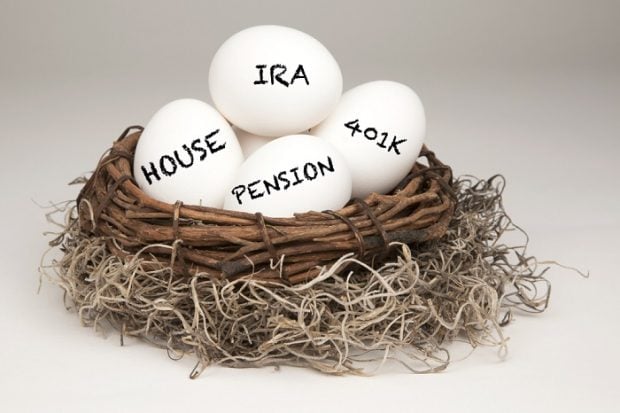 EBRI said it's important for databases to be able to link separateaccounts owned by the same individual within and across providersto determine the potential total retirement savings amount. (Photo:Shutterstock)
EBRI said it's important for databases to be able to link separateaccounts owned by the same individual within and across providersto determine the potential total retirement savings amount. (Photo:Shutterstock)
A recent study by the Employee Benefit ResearchInstitute examines whether required minimum distribution rules area significant factor in IRA withdrawals, and suggests that theyare.
|Related: 10 things to know about RMDs
|“EBRI's findings for 2016 contain information on over 24.2million accounts owned by some 19.1 million individuals with totalassets of $2.36 trillion,” Craig Copeland, EBRI senior research associateand author of the IRA report, said in a statement.
|“The report shows that in 2016, 22.7% of those ages 71 or olderwere found to have traditional IRA withdrawals in excess of theirrequired minimum distributions, meaning that over three-quarterstook only the amount they were required to take.”
|Among IRA owners who took withdrawals in excess of theirRMD, 49.3% had balances less than $5,000. Thepercentage of account holders with withdrawals trended downward, to25.1% for those with account balances of $10,000 to $24,999, to21.1% for those with balances of $150,000 to $249,999 and to 18.2%for those with balances of $250,000 or more.
|EBRI said that the median withdrawal rates in 2016, the latestyear for which data were available, suggested that many individualsmay be able to depend on the IRA as a continuing source of income throughout retirement. It noted,however, that further research would be needed to determine whetherthose individuals maintained the same withdrawal rates over longertime frames.
|The RMD rules apply only to traditional IRA owners, who arerequired to make an annual minimum distribution beginning in theyear they turn age 70 ½. The RMD rules do not apply to Roth IRAowners.
|As a result, only 6.2% of Roth IRA owners ages 71 to 79 in theEBRI study took a withdrawal in 2016.
|EBRI's analysis showed that the average IRA accountbalance in the database was $97,515 in December 2016, and theaverage IRA individual balance (when all accounts owned bythe individual were combined) was $123,973. This amounted to a 27%larger balance when all of an individual's accounts wereconsidered.
|EBRI said these findings showed the importance of databasesbeing able to link separate accounts owned by the same individualwithin and across data providers in order to determine thepotential total retirement savings the individual has byaggregating their multiple IRA accounts.
|Other key findings
In 2016, Roth IRAs had the lowest average balance, whiletraditional IRAs had the highest average balances.
|Rollovers to IRAs, regardless of the source, were some 16 timeshigher than the total contributions in the database. The averagerollover to a Traditional IRA was $94,238, and the median rolloverwas $21,383.
|About one-tenth of all accounts in the database received acontribution in 2016, but Roth IRAs were more than four timeslikelier to receive a contribution than traditional IRAs.
|In 2016, 27.1% of traditional IRA owners took a withdrawal,compared with 4.6% of Roth IRA owners.
|The research showed that 50.9% of IRA assets were allocated toequities in 2016, although this varied with the owner's age,account balance and IRA type. In addition, 13.2% were in balancedfunds, 14.7% in bonds, 11.1% in money and 10.1% in otherassets.
|When the equity share of balanced funds were combined with theequity allocation, the total equity exposure of IRA owners was58.8% of the assets.
|Traditional IRAs owners had, on average, lower allocations toequities. In addition, equity allocations peaked for bothtraditional and Roth IRA owners at ages 45 to 54. IRAs with thebiggest and smallest balances had the lowest combined exposure toequities (including the equity share of balanced funds).
|Overall in 2016, 28.6% of IRAs had less than 10% in equities,and 26.6% had more than 90% in equities — so-called extremeallocations in a particular asset category.
|EBRI said the sizable percentage of IRA owners with extremeallocations showed that there was room for improvement inallocation behavior of IRA owners to reach a better diversificationof assets.
|Twenty-three percent of IRAs had more than 90% of their assetsin bonds and money.
Complete your profile to continue reading and get FREE access to BenefitsPRO, part of your ALM digital membership.
Your access to unlimited BenefitsPRO content isn’t changing.
Once you are an ALM digital member, you’ll receive:
- Critical BenefitsPRO information including cutting edge post-reform success strategies, access to educational webcasts and videos, resources from industry leaders, and informative Newsletters.
- Exclusive discounts on ALM, BenefitsPRO magazine and BenefitsPRO.com events
- Access to other award-winning ALM websites including ThinkAdvisor.com and Law.com
Already have an account? Sign In
© 2024 ALM Global, LLC, All Rights Reserved. Request academic re-use from www.copyright.com. All other uses, submit a request to [email protected]. For more information visit Asset & Logo Licensing.








